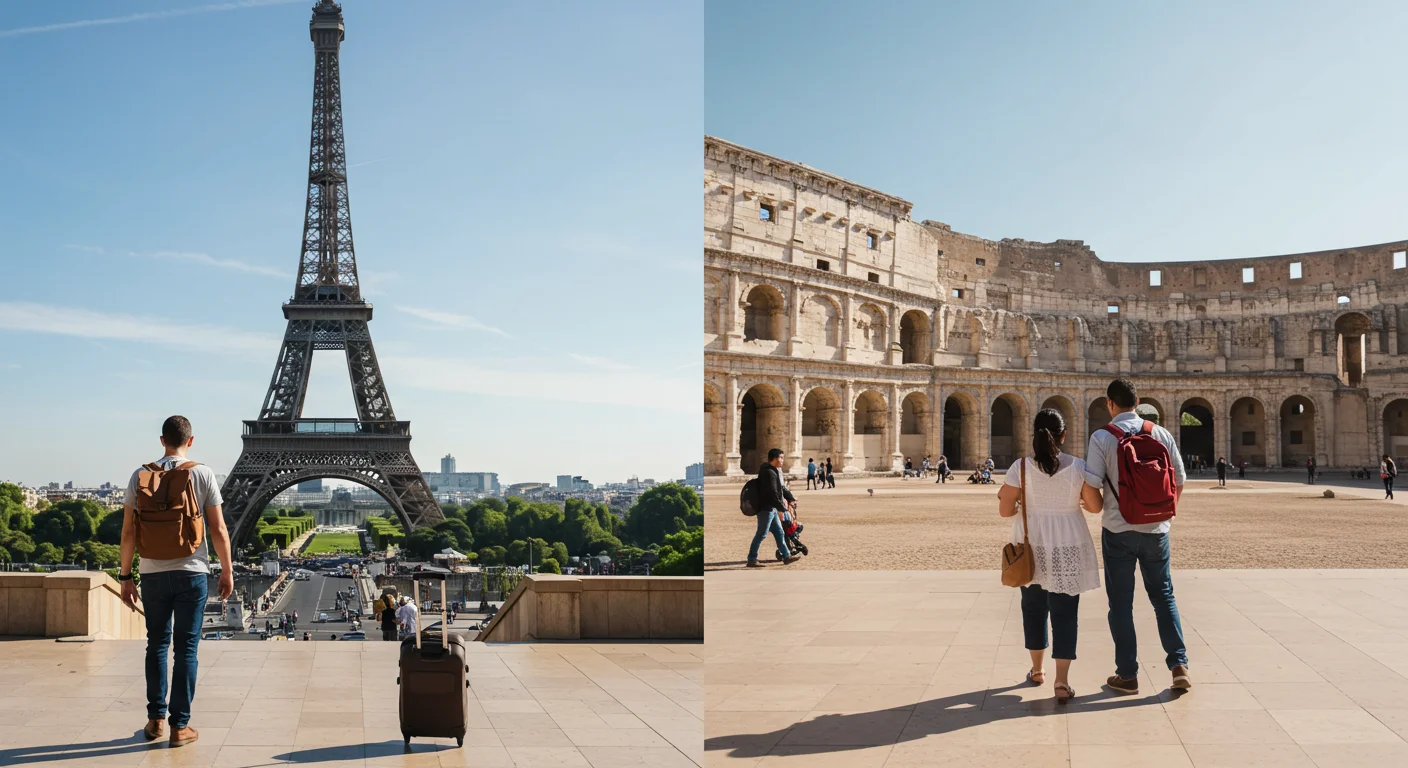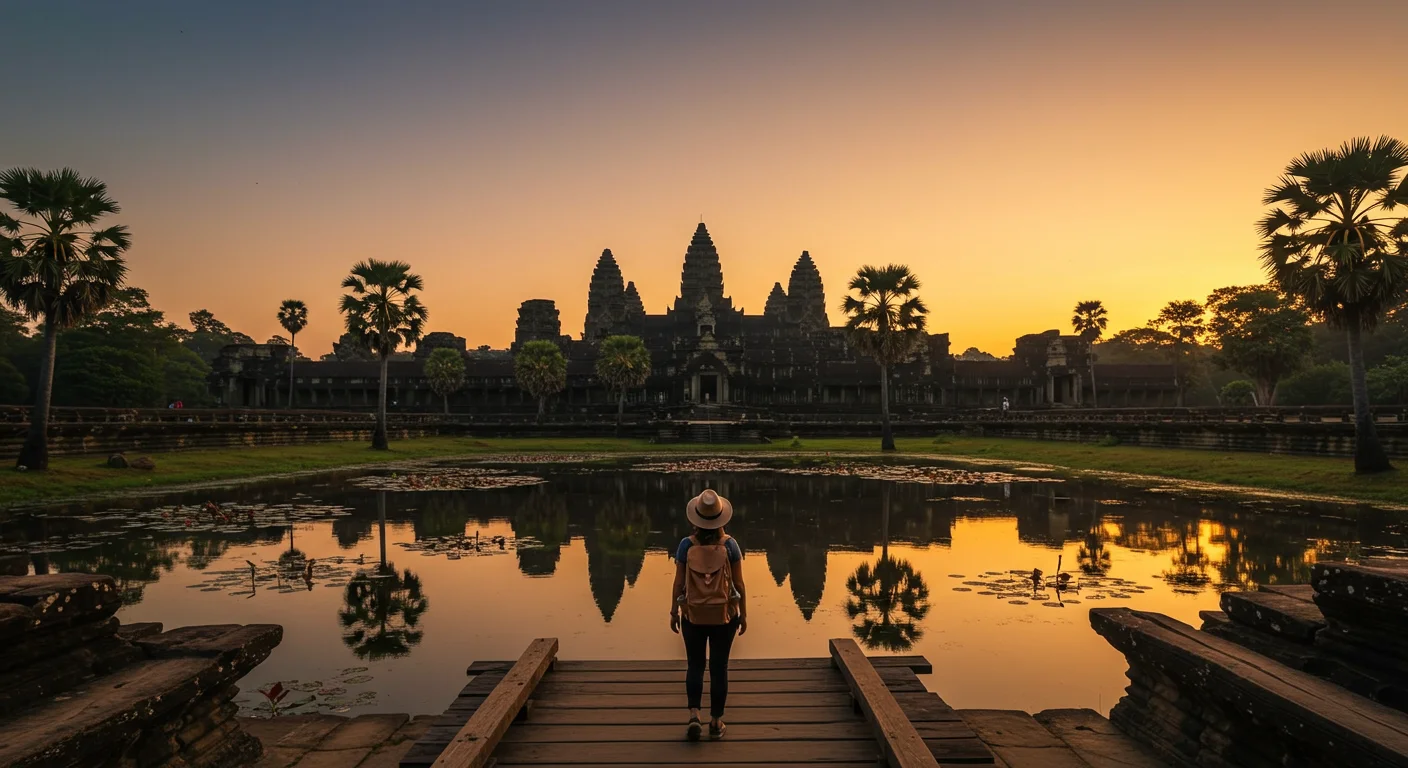Have you ever dreamed of exploring ancient ruins or wandering through famous art museums? When planning such a trip, a big question pops up: should you go for a **budget vs. luxury: visiting cultural landmarks both ways**? This decision impacts everything from how much you spend to the kinds of memories you make. Whether you imagine cozy hostels near historical sites or fancy resorts with private tours, this guide will help you understand your options and pick the best travel style for your journey to see the world's amazing cultural spots.
What Do Budget and Luxury Travel Really Mean?
Before diving into how to visit cultural landmarks, let's understand what budget and luxury travel truly involve. **Budget travel** is all about getting the most value for your money. It means smart spending, being flexible, and really getting to know the local culture. Travelers often choose hostels or simple hotels, use public transportation, and look for local, affordable experiences. Imagine trying delicious street food right outside a historic market, or taking a local bus to a famous temple.
On the flip side, **luxury travel** focuses on comfort, excellent service, and convenience. This style might include staying in high-end resorts, flying first class, and having special activities planned for you with little effort on your part. Think of having a private car take you directly to a monument, or a concierge arranging exclusive access to an art gallery. Both ways can be incredibly rewarding. It really just depends on what you value most for your trip and what kind of memories you want to create.
The Perks and Pitfalls of Budget Travel for Cultural Explorers
Choosing **budget travel** doesn't mean you miss out on quality; it just means you are intentional with your spending. Many budget travelers prioritize experiences over super fancy comforts. When visiting cultural landmarks, budget travel can offer unique advantages.
- Deeper Cultural Immersion: Staying in local guesthouses or hostels means you are closer to everyday life. You might find hidden gems like small local cafes or traditional workshops that luxury travelers might miss. Eating at local eateries or trying street food near landmarks gives you a true taste of the region.
- Extended Trips: With lower daily costs, you can often travel for a longer time, allowing you to explore more landmarks or spend more time at each one. This is great if you want to soak everything in.
- Greater Flexibility: Budget travel often means you are less tied to strict schedules. You can decide on the spur of the moment to spend an extra day exploring a historic district or chasing an unexpected local festival.
- Authentic Interactions: Using public transport or interacting with local vendors for food and souvenirs leads to more genuine connections with people. You might meet other travelers who share your interest in exploring cultural sites on a shoestring.
However, budget travel also has its challenges:
- Less Comfort: You might encounter fewer amenities or less spacious accommodations. For instance, sharing bathrooms in a hostel near a historic city center.
- More Effort: Planning and logistics often require more time and energy. You'll be researching bus routes, comparing prices, and finding your way around, especially when visiting diverse cultural landmarks.
- Potential for Travel Fatigue: All that planning and moving can be tiring, especially after a long day of sightseeing.
Despite these drawbacks, for many, the freedom and authenticity of **budget travel** make it the perfect choice for experiencing cultural landmarks.
Luxury Travel: Experiencing Landmarks with Ultimate Ease
In the discussion of **budget vs. luxury: visiting cultural landmarks both ways**, luxury travel certainly has its strong points when convenience and indulgence are what you are looking for. It's about enjoying the best comforts and getting away to a world of top-notch services when you want to explore historical sites and cultural attractions.
Benefits of Luxury Travel for Cultural Exploration:
- Maximum Comfort and Service: Imagine arriving at a five-star hotel near a famous museum, with every detail arranged for you. You get plush accommodations, spacious rooms, and personalized service like a concierge who can book private tours or secure hard-to-get tickets to a special cultural event.
- Stress-Free Planning: Luxury travel often includes concierge support or a dedicated travel expert who handles all the details. This means less worry about logistics like transportation to ancient sites or coordinating museum entry times. You simply show up and enjoy the experience.
- High-End Amenities and Personalized Experiences: This could mean private tours of historical sites outside regular hours, gourmet dining experiences after visiting a landmark, or even a personal guide who provides in-depth knowledge about the culture and history. These curated experiences are often exclusive and can make your visit truly unique.
- Ideal for Special Occasions: For honeymoons, milestone birthdays, or special celebrations, luxury travel ensures everything is seamless and memorable, allowing you to focus on the significance of the cultural landmarks you are visiting.
Drawbacks of Luxury Travel:
- Higher Price Tag: This is the most obvious downside. The cost of luxury travel, especially when visiting multiple high-profile cultural landmarks, can be significantly higher. For example, a two-week luxury trip to Vietnam for three people cost about $16,000, covering guides, drivers, flights, and top hotels. In comparison, a two-week budget trip to Peru for four people cost around $4,200. This shows a clear difference in the financial commitment required for **budget vs. luxury: visiting cultural landmarks both ways**.
- Less Adventurous: Sometimes, the extreme comfort and pre-planned nature might make the trip feel less spontaneous or adventurous. You might miss out on unexpected discoveries that come from navigating a new place on your own.
- May Feel Less Immersive: While luxury travel can offer exclusive cultural experiences, it might sometimes feel a bit disconnected from the everyday local life. Staying in upscale resorts might mean you are not experiencing the local way of life as much as a budget traveler would by staying in simpler accommodations or using public transport.
Comparing Costs: How Much Will Your Landmark Trip Be?
The biggest difference between luxury and budget travel often comes down to cost. Luxury travel generally means higher spending for top-notch hotels, transportation, and food, offering exceptional comfort and special experiences. Budget travel, on the other hand, is about stretching your money, allowing you to visit more places or stay longer, making it a great option for exploring many cultural landmarks without breaking the bank.
Let's look at how costs differ: A luxury trip might involve staying in a five-star hotel with private pools, and hiring personal drivers to take you to historical sites. This is common in luxury travel. For example, a detailed tour package for Vietnam for three people could be around $14,500, including tours, guides, drivers, and hotels. Additional costs for tips and dinners could add another $100 per day for the group. This amounts to about $1,140 per day, or $380 per person per day.
Conversely, a budget trip to Peru for a family of four cost approximately $4,200 for two weeks, which is about $300 per day or $75 per person per day. This trip included bus tickets, budget tours, Airbnb stays, and local food. This highlights the vast difference in daily expenditure between **budget vs. luxury: visiting cultural landmarks both ways**.
While luxury travel costs more, it saves you time and effort in planning. Budget travel takes more time and research but offers flexibility and significant savings. Knowing these cost differences helps travelers make choices that fit their budgets and desires.
Getting Around: Transportation to Cultural Sites
How you travel to cultural landmarks also varies greatly between budget and luxury styles.
Luxury Transportation:
Luxury travelers often choose private jets, first-class flights, and chauffeur services. These options offer maximum comfort and convenience. Imagine being picked up from the airport in a private car and driven directly to your five-star hotel, then having the same driver take you to a remote ancient ruin. This minimizes hassle and maximizes relaxation, allowing you to arrive at each landmark feeling refreshed.
Budget Transportation:
Budget travelers embrace public transportation like buses and trains. This allows for a deeper connection with the local environment and culture. For example, taking a local bus to a market before walking to a historical church. While it might involve more planning and sometimes less comfort, it offers authentic local experiences and significant cost savings. It is a key aspect of how people approach **budget vs. luxury: visiting cultural landmarks both ways**.
Dining: From Street Food Delights to Gourmet Experiences Near Landmarks
Food is a huge part of cultural immersion, and your travel style will dictate your dining experiences near cultural landmarks.
Luxury Dining:
Luxury travelers can indulge in Michelin-starred restaurants or gourmet food tours. These experiences are often curated, offering exquisite flavors and impeccable service. After visiting a grand palace, you might enjoy a private chef experience or a tasting menu at a world-renowned restaurant nearby. This is about culinary excellence and fine dining as part of the overall luxurious experience.
Budget Dining:
Budget travelers often opt for local eateries, street food stalls, and self-catering. This provides an authentic taste of the local culture and is much more affordable. Imagine grabbing a delicious empanada from a street vendor after exploring Machu Picchu, or trying fresh seafood at a local market near a Caribbean island landmark. This approach allows for true culinary adventures and a deeper connection with local life. It is crucial to remember that good food does not always come with a high price tag, especially when considering **budget vs. luxury: visiting cultural landmarks both ways**.
Activities and Excursions: How You Experience Landmarks
The type of activities and excursions you choose will also differ based on your travel style when visiting cultural landmarks.
Luxury Experiences:
Luxury travel offers exclusive activities like private tours of historic sites, VIP access to museums, or even helicopter tours over stunning landscapes that include famous landmarks. These are designed to be personal and unique, giving you special insights and avoiding crowds. For instance, having a dedicated guide explain the intricacies of an ancient temple, or a behind-the-scenes look at a national monument.
Budget Experiences:
Budget travelers often choose group tours or explore independently. While they might not offer the same exclusivity, they are a cost-effective way to see landmarks at your own pace. You can enjoy free walking tours, visit public parks, or explore historical districts on your own. This offers freedom to discover unexpected gems and learn about the culture through self-guided exploration. Both approaches allow you to make memories, but luxury experiences are typically more private and curated, while budget ones encourage more personal discovery. The distinction is key when weighing **budget vs. luxury: visiting cultural landmarks both ways**.
Personalization and Convenience: Tailoring Your Landmark Journey
One of the biggest differences between luxury and budget travel lies in the level of personalization and convenience offered, especially when navigating complex itineraries involving multiple cultural landmarks.
Luxury Convenience:
Luxury travel emphasizes a smooth and effortless journey. Concierge services and customized itineraries are standard. These personal helpers ensure your needs are met, from arranging special tours to booking VIP dining spots near landmarks. They handle all transport and luggage details, crafting itineraries that maximize your time and preferences. This means less stress for you and more time to enjoy the historical beauty.
Budget Planning:
Budget travel means you handle most of the planning yourself. While this can be challenging, it gives you incredible freedom to explore at your own pace, discover unique places, and adapt your plans as you go. You learn to use apps for navigation and translation, becoming an empowered and independent traveler. This hands-on approach is often a core part of the adventure for those choosing **budget vs. luxury: visiting cultural landmarks both ways**.
Cultural Immersion: Connecting with Locals at Landmark Sites
Both luxury and budget travel offer ways to dive into local culture and connect with communities, though the methods differ. Connecting with the people behind the cultural landmarks is a crucial part of any journey.
Budget Immersion:
Budget travel often leads to more direct interactions with locals and other travelers. Staying in hostels near city centers, using public transport, and simply being open to new experiences can lead to unexpected conversations and genuine insights into local life. You might find yourself chatting with a street vendor about the history of a nearby monument, or sharing stories with other backpackers about their experiences at different cultural sites.
Luxury Immersion:
Luxury travel can also offer deep cultural experiences, often curated for exclusivity. This might involve meeting local artisans, participating in traditional ceremonies with a private guide, or learning about a region’s history from an expert historian. While these interactions might be less spontaneous, they offer a specialized look into the culture. The key is to remain open-minded and willing to engage, regardless of whether you choose **budget vs. luxury: visiting cultural landmarks both ways**.
Environmental and Ethical Considerations
Choosing your travel style also involves thinking about its impact on the environment and local communities, especially when visiting delicate cultural landmarks.
Budget's Eco-Friendliness:
Budget travel often aligns with eco-friendly practices by naturally encouraging the use of public transport and staying in smaller, locally-owned accommodations. This often means a smaller carbon footprint and direct support for local economies. When you buy from a street vendor or stay in a guesthouse, your money directly benefits the local community.
Luxury's Responsible Side:
While luxury travel might seem to have a larger footprint, many high-end options are becoming more environmentally conscious and community-focused. This includes resorts that use sustainable practices or tours that actively support local conservation efforts or cultural preservation projects. It's important to research companies that prioritize these values. Being aware of these aspects helps you enjoy your trip to cultural landmarks without harming the places you visit, no matter if you lean towards **budget vs. luxury: visiting cultural landmarks both ways**.
Finding Your Perfect Balance: Hybrid Travel
Remember, the choice between budget and luxury is not always a strict black and white. Many travelers successfully combine both styles depending on the destination, their travel companions, or the occasion. This is often called a hybrid approach. For instance, you could fly economy to a destination to save money, but then splurge on a luxurious private tour of a famous historical site. Or, you might stay in affordable accommodations for most of your trip but book a night or two in a high-end hotel near a landmark for a special treat. This mix-and-match strategy allows you to enjoy the best of both worlds, saving money where it counts while indulging in experiences that matter most to you, especially when visiting cultural landmarks. This flexibility is a great way to tailor your journey and truly make it your own.




